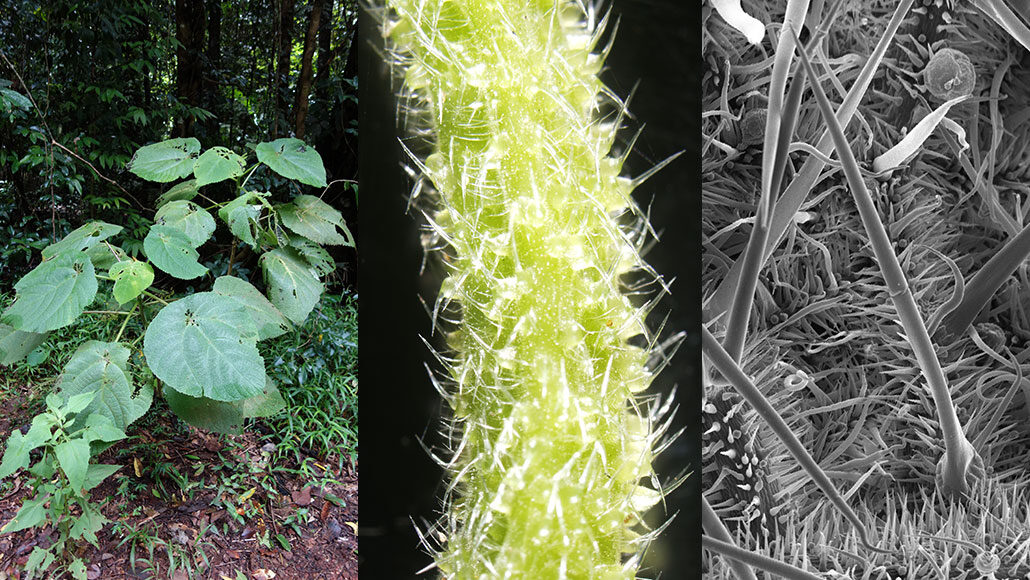Questions for “Please do not touch the Australian stinging tree”

Stinging trees (left) look harmless. But their stems and petioles (middle) are covered with tiny, needle-like hairs (right) that inject venom under the skin.
(from left) T. Durek; T. Durek; Darren Brown/ Univ. of Queensland